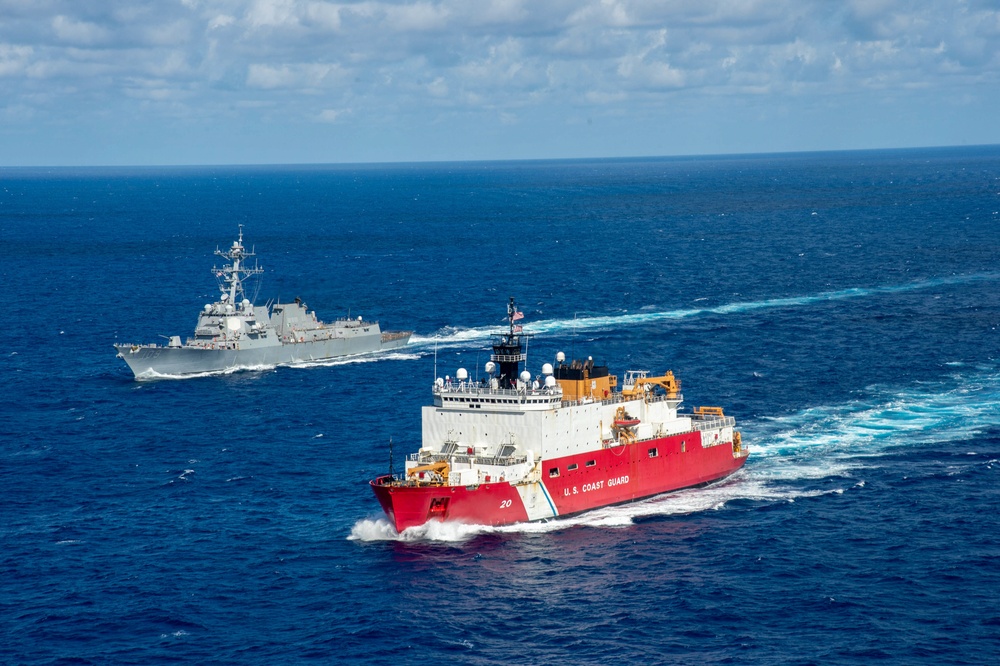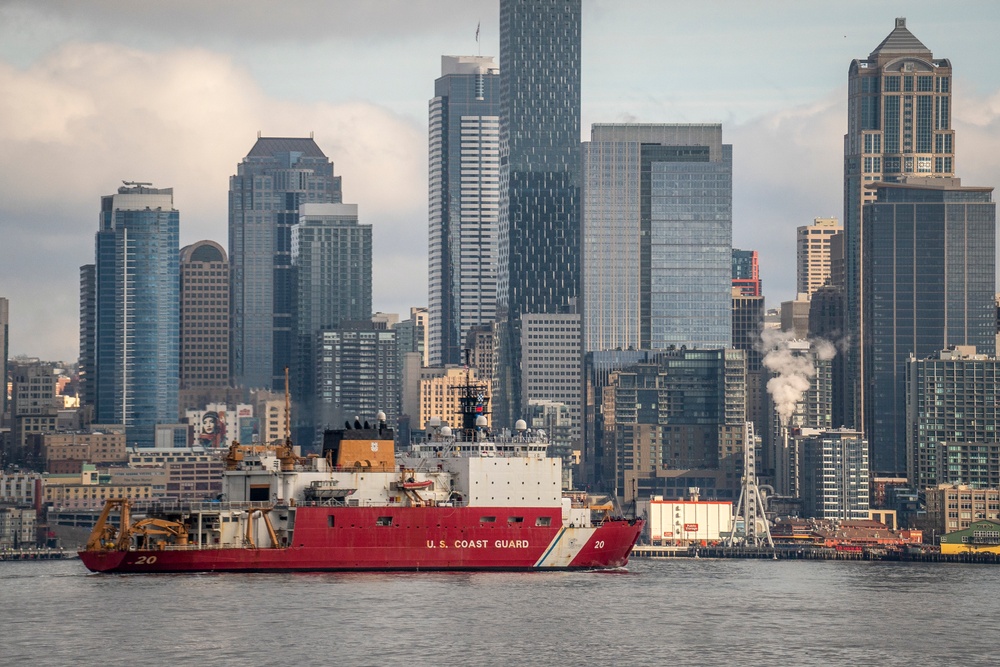Delivery of the U.S. Coast Guard’s new icebreaker is delayed, even as the agency as sharpens its Arctic focus
The delivery schedule for a new U.S. icebreaker is being pushed back by one year, the Coast Guard announced after Healy circumnavigated North America.

The newest U.S. heavy icebreaker will not be delivered until 2025, a year later than planned, the U.S. Coast Guard recently announced.
The news came as the Coast Guard medium-duty icebreaker, the U.S. Coast Guard Cutter Healy, completed a circumnavigation of North America earlier this month, returning to port in Seattle on Nov. 20 after conducting scientific missions in the Northwest Passage and Baffin Bay.
The new icebreaker, which is being constructed by shipbuilding company VT Halter, now has a “contract delivery planned for 2025,” the Coast Guard said at the end of a statement about Healy’s voyage.
The ship was originally planned for delivery in 2024, although the contract with VT Halter included incentives for early delivery.
Coast Guard commandant Adm. Karl Schultz said, in a March 2020 testimony before the U.S. House subcommittee on homeland security, that the service was pursuing an “aggressive” timeline with a possible delivery in 2023.
But in his written testimony to the subcommittee in April 2021, Schultz didn’t bring up a timeline at all.
[Full speed ahead for Russia’s new fleet of giant icebreakers]
The delays in construction were reported earlier this year, with an unclear production schedule attributed in part to the COVID-19 pandemic.
Initially, the delays were not expected to push back the delivery of the ship.
“We continue to see those icebreakers constructed down on the Gulf Coast and I’m excited,” Vice Adm. Steven D. Poulin, commander of the Atlantic area, said in August. In “2024, we hope to see those things launched and in service, and I think we’re on a good track line,” he said.
But a Coast Guard spokesperson told ArcticToday on Wednesday that the new vessel is “still in the design phase,” and Halter Marine “is working toward completing the necessary work to begin construction” on it.
This is the first icebreaker constructed by the Mississippi-based VT Halter. The company declined to answer inquiries from ArcticToday about the delay.
VT Halter unveiled a model of the icebreaker in August at Sea Air Space 2021, an annual maritime conference near Washington, D.C. The ship, based on the design of Germany’s Polarstern II, will be 460 feet long, powered by diesel and electric propulsion motors, with a capacity for carrying 186 people.
In June 2020, President Donald Trump called for an accelerated expansion of the icebreaker fleet. Schultz said in January 2021 that the Coast Guard would like to have a fleet of six heavy and three medium new icebreakers.
The recapitalization program has about $1.8 billion in funding through fiscal year 2021, fully funding the first two heavy icebreakers.
The proposed budget for fiscal year 2022, which began on Oct. 1, includes $170 million for funding long lead-time materials for a third vessel, among other items.
In a July 2021 report, the House Appropriations Committee said it was “disappointed” that the Navy’s shipbuilding office had not considered purchasing new or used icebreakers, asking for a report on the service’s plan for the fleet by September.
And in September, the House Committee on Transportation and Infrastructure asked the Government Accountability Office to review the construction delays.
Currently, the U.S. fleet is comprised of two icebreakers, the 21-year-old Healy and the nearly 46-year-old Polar Star.
The Polar Star, which has broken down on several occasions and began a new service-life extension this year, completed the northernmost journey of any U.S. surface vessel in winter last year.
The Healy, which underwent extensive repairs after an engine fire cut its Arctic patrol short in 2020, set off on its transit of the Northwest Passage in August, the first such voyage for the ship in 16 years.
Healy’s trip around North America took 133 days and covered 22,000 miles. Scientists on board conducted oceanographic research in the Northwest Passage and Baffin Bay, and they mapped 20,000 square kilometers of seafloor, more than half of which had never before been mapped.
The U.S. icebreaker crew also collaborated with Canadian Coast Guard and Canadian Rangers on a joint search-and-rescue exercise off the coast of Nunavut in September.
Ens. Valarie Hines, an ice pilot aboard Healy, breaks through Arctic ice as she maneuvers through the Beaufort Sea, Sept. 1, 2021. (U.S. Coast Guard / Matt Masaschi)

